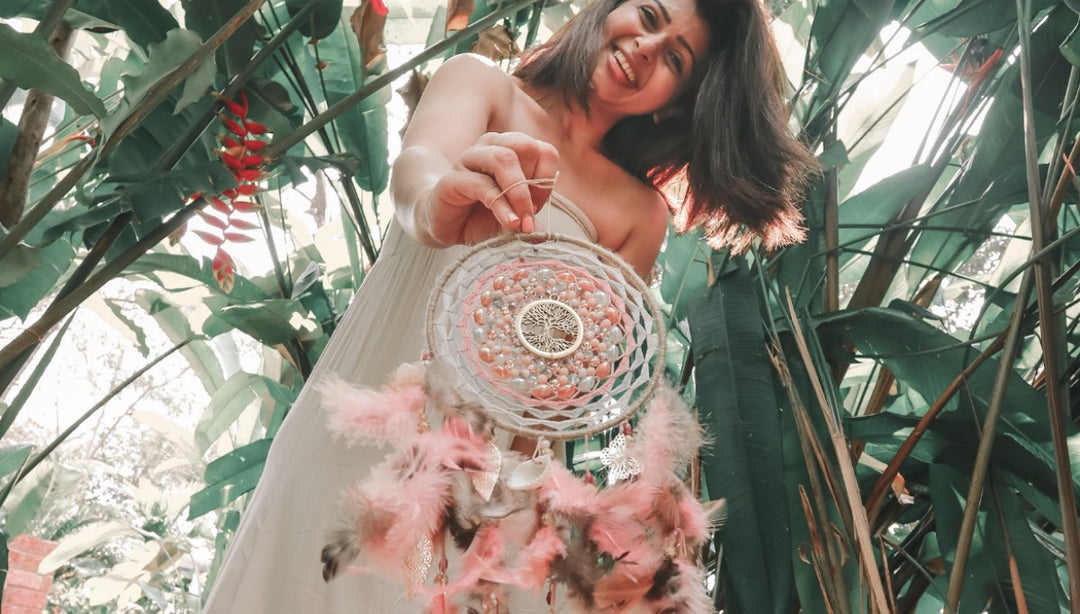3 Dreamcatcher Myths Busted
Dreamcatchers are undoubtedly among the most stunning, thought-provoking, and aesthetically-rich decorative items available. Any generation in your family will indeed have a dreamcatcher tale to tell you.
Note: Beware of the tales that seem mythical. Dreamcatcher myths are often hilarious and simply intend to amplify their uplifting vibe wrongfully.
As a symbol of the circle of life, the dreamcatcher is formed in a circular shape. It also beautifully references the sun and moon's daily and nightly trek through the sky. The canvas is in charge of capturing unpleasant dreams and demonic spirits during the night and releasing them in the morning. On the other hand, the feathers intend to induce positive and wholesome dreams to enter the sleeper's mind.
Various brilliant concepts mixed with lovely craftsmanship should have made this item a best-selling product. However, multiple dreamcatcher myths led the public to be misguided.
Here are a few myths and facts about dreamcatchers.
Also Read:- How To Cleanse Your Dreamcatcher
Only Native Americans Can Craft It
Although this idea originated from Native Americans, the positivity and intriguing element of mysticism it bought made several cultures of the world develop an attraction towards it. As many dreamcatcher enthusiasts believe, it doesn't get purer than this when it comes to protecting your children from evil nightmares.
The beauty of globalization is that everything is available to everyone. Not only do dreamcatchers let us own lovely artwork over our bed and in high locations of our rooms, but they also remind us of the rich culture of Native Americans.
The procedure of crafting a dreamcatcher is best improved upon through practice and the passage of time. Furthermore, many enthusiasts hold workshops to pass on their skills, irrespective of their origins being from Native America.
Simply put, with dreamcatchers, you are bringing a heritage with you, regardless of your culture, which we think is admirable.
Big Dreamcatchers Are More Powerful Than Small Ones
The dreamcatcher's initial purpose was to capitalize on a cognitive process known as positive reinforcement.
When you look at a brand, for instance, Disney, your imagination suddenly triggers itself. Your thoughts travel to unique encounters, happiness, and nostalgia. That is the image the brand has imprinted on your mind.
Similarly, you begin to identify joyful dreams and optimism with the dreamcatcher. You stare at it before going to bed, knowing that you are being taken care of. Such a fulfilling item to look at allows you to have happier thoughts, which turn into pleasant dreams.
As a result, the size of the dreamcatcher has relatively little to do with their effectiveness because it is your imagination that creates the magic!
Also Read:- Best Place To Hang A Dreamcatcher
It's A Form Of Cultural Appropriation
Keep in mind, dreamcatchers are not a form of cultural appropriation regardless of where they are designed, created, or sourced from.
Cultural appropriation is present in 99.9% of our culture. You can't eat most cuisines, wear most clothing, listen to most songs, or appreciate most sports without encountering some type of cultural appropriation. In addition, you are respecting it and using it for the same purposes as back in the day.
On a deeper level, appropriation occurs when you begin claiming it as your own. However, we all recognize where credit is due and make an effort to provide it. Further on, Native American tribes are happy because their culture is being appreciated!
Since dreamcatchers carry a specific aura denoting magic or enchantment, there's no shortage of dreamcatcher myths that people create with baseless facts. Steer clear from these opinions and opt for an eye-catching dreamcatcher for your living room or home entrance!



Leave a comment